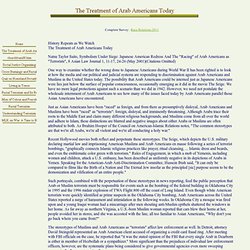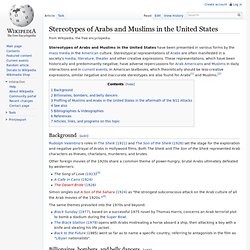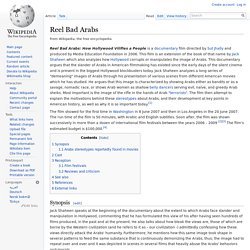

Arab American Students In Public Schools - American-Arab Anti-Discrimination Committee. Arab American Students In Public Schools Arab Americans in U.S. schools represent more than 20 countries in the Middle East and Northern Africa.

They share many similarities with other immigrant groups seeking to establish an ethnic identity in a heterogeneous country, but they also face additional challenges. These result especially from negative stereotyping; racism and discrimination; widespread misinformation about their history and culture; and, for the majority who are Muslim, the need to find ways to practice their religion in a predominantly Judeo-Christian country (Jackson, 1995). Some Muslim Arab American parents send their children to private Muslim schools so they can receive an education consonant with the family's religious beliefs, but most opt for public schools (Zehr, 1999). As the number of Arab American students in public schools has increased, so has the array of strategies and materials for successfully integrating them. School Climate: The Treatment of Arab Americans Today. History Repeats as We Watch The Treatment of Arab Americans Today Natsu Taylor Saito, Symbolism Under Siege: Japanese American Redress And The "Racing" of Arab Americans as "Terrorists", 8 Asian Law Journal 1, 11-17, 24-26 (May 2001)(Citations Omitted) One way to examine whether the wrong done to Japanese Americans during World War II has been righted is to look at how the media and our political and judicial systems are responding to discrimination against Arab Americans and Muslims in the United States today.

The possibility that Arab Americans could be interned just as Japanese Americans were lies just below the surface of popular consciousness, occasionally emerging as it did in the movie The Seige. We have no more legal protections against such a scenario than we did in 1942. However, we need not postulate the wholesale internment of Arab Americans to see how many of the issues faced today by Arab Americans parallel those Asian Americans have encountered. B. Evidence C. American Educational History Journal Volume 36, Number 1 & 2, 2009 - J. Wesley Null.
Evaluation of secondary-level textbooks for coverage of the Middle East and North Africa (Book, 1994. Arabface! - The History of Racist Arab Stereotypes. Www.aaiusa.org. Stereotypes of Arabs and Muslims in the United States. Stereotypes of Arabs and Muslims in the United States have been presented in various forms by the mass media in the American culture.

Stereotypical representations of Arabs are often manifested in a society's media, literature, theater and other creative expressions. These representations, which have been historically and predominantly negative, have adverse repercussions for Arab Americans and Muslims in daily interactions and in current events. In American textbooks, which theoretically should be less-creative expressions, similar negative and inaccurate stereotypes are also found for Arabs[1] and Muslims.[2] Background[edit] Other foreign movies of the 1920s share a common theme of power-hungry, brutal Arabs ultimately defeated by westerners:
Anti-Arabism. Anti-Arabism or Arabophobia is consistent advocacy of discrimination, extermination, prejudice, hostility, hatred, or genocide toward Arabs.

Arab definition[edit] Arabs are people whose native language is Arabic. People of Arabic origin, in particular native English and French speakers of Arab ancestry in Europe and the Americas, often identify themselves as Arabs. Due to widespread practice of Islam among Arab populations, Anti-Arabism is commonly confused with Islamophobia.[1] Reel Bad Arabs. Reel Bad Arabs: How Hollywood Vilifies a People is a documentary film directed by Sut Jhally and produced by Media Education Foundation in 2006.

This film is an extension of the book of that name by Jack Shaheen which also analyzes how Hollywood corrupts or manipulates the image of Arabs. This documentary argues that the slander of Arabs in American filmmaking has existed since the early days of the silent cinema and is present in the biggest Hollywood blockbusters today. Jack Shaheen analyzes a long series of "demeaning" images of Arabs through his presentation of various scenes from different American movies which he has studied. He argues that this image is characterized by showing Arabs either as bandits or as a savage, nomadic race, or shows Arab women as shallow belly dancers serving evil, naïve, and greedy Arab sheiks.
Most important is the image of the rifle in the hands of Arab "terrorists". §Synopsis[edit] Shaheen says, "Each of Hollywood and Washington share the same genes. "